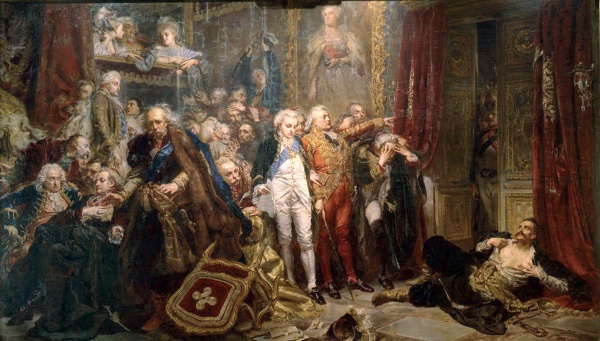Facts About Rejtan (painting)
"Rejtan, or the Fall of Poland" is a renowned oil painting by Polish artist Jan Matejko, completed in 1866. This powerful artwork captures the emotional protest of Tadeusz Rejtan against the First Partition of Poland during the Partition Sejm of 1773. More than just a historical depiction, the painting serves as an allegory of Poland’s tumultuous times. Today, it remains one of Matejko’s most celebrated works, symbolizing a poignant cry of resistance.
The painting’s narrative centers on Tadeusz Rejtan, a deputy in the Polish–Lithuanian Commonwealth Sejm. In 1773, the Sejm was under immense pressure to accede to the territorial demands of Russia, Prussia, and Austria, leading to the First Partition of Poland. Rejtan’s dramatic protest, where he physically blocked the chamber’s doorway, was a desperate attempt to prevent the acceptance of these foreign demands.
Though somewhat dramatized, Matejko’s portrayal of this moment captures the essence of the event. The painting symbolizes all three partitions of Poland and includes prominent historical figures from that era. Initially, the artwork sparked controversy in Poland. Critics accused Matejko of being defeatist and of exploiting historical events for self-promotion. However, over time, the painting gained recognition for its educational value and emotional resonance.
"Rejtan, or the Fall of Poland" transcends mere historical documentation. It criticizes Russian interference in Polish affairs and underscores the betrayal by some Polish aristocrats. The painting has come to embody patriotic dissent and moral courage, even when faced with seemingly insurmountable odds. It has inspired various forms of artistic expression in Poland, including protest songs.
Today, the painting is displayed at the Wawel Royal Castle National Art Collection in Kraków. It serves as a poignant reminder of Poland’s challenging history and a testament to the enduring spirit of protest and patriotism.

 Belarus
Belarus